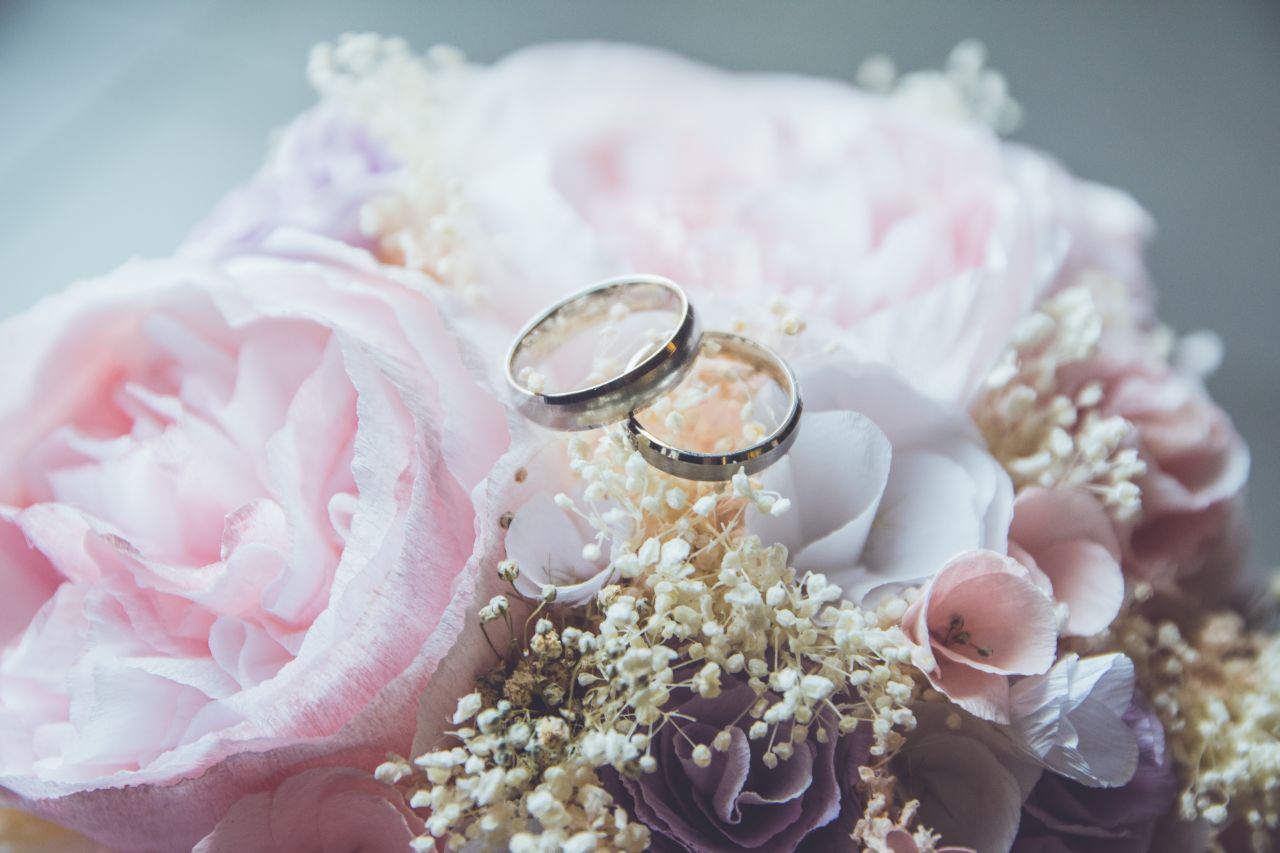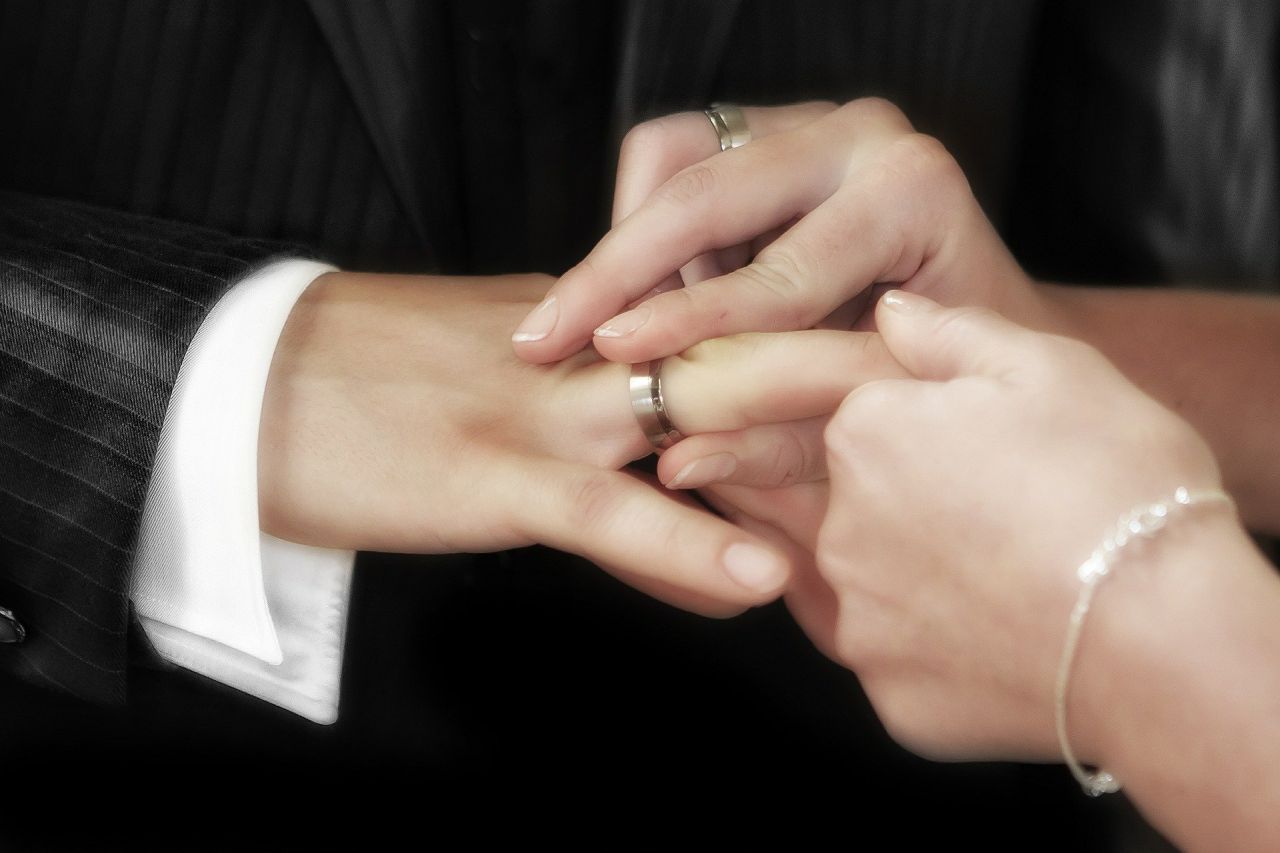One of the most significant choices couples face when selecting wedding rings is the type of metal. The ring you choose will symbolise your commitment, so it’s essential to understand how different metals affect the look and longevity of your rings.
Gold and silver are two popular options, each with unique characteristics. This guide delves into the benefits and drawbacks of both metals, helping you make an informed decision based on style, practicality, and budget.
Let’s get straight to the point
Choosing between white gold and silver for wedding rings involves weighing each metal's durability, cost, maintenance, and style.
White gold is durable, hypoallergenic (with rhodium plating), and offers a modern, elegant look but is more expensive and requires occasional re-plating.
Silver is an affordable, bright metal that develops a vintage patina over time, yet it’s softer, tarnishes easily, and requires more maintenance.
White gold is ideal for long-lasting, daily-wear rings, while silver suits those seeking an economical, classic appeal. Your choice depends on budget, style, and maintenance preferences, making either metal a meaningful investment.
White Gold and Silver for Wedding Rings

Before choosing between gold and silver, let’s examine each metal's properties and why they are commonly used in wedding bands. Knowing the details of white gold and silver will allow you to weigh their pros and cons effectively.
White Gold: Composition and Characteristics
White gold is created by blending gold with metals such as palladium, nickel, manganese, or zinc.
This mix enhances gold's strength and reduces its natural yellow tone, giving white gold its distinctive shine.
Additionally, white gold is often coated with rhodium, a durable metal from the platinum family, which adds to its brilliance and durability.
Pros of White Gold:
- Durability: White gold is a sturdy, long-lasting metal, making it ideal for daily wear.
- Low Maintenance: The rhodium coating offers a protective layer that prolongs the metal’s shine.
- Elegant Look: White gold provides a modern, elegant appearance and beautifully complements various gemstones.
Cons of White Gold:
- Allergic Reactions: Many white gold alloys contain nickel, which can cause allergic reactions.
- Rhodium Replating: The rhodium plating may wear off over time, requiring occasional re-plating to maintain the ring's appearance.
Silver: Composition and Characteristics
Pure silver is highly malleable and not suitable for jewellery on its own. Typically, silver jewellery is made with sterling silver, which combines 92.5% silver with other metals, such as copper or nickel, to increase strength and durability.
Sterling silver is popular in various jewellery types but requires more care to prevent tarnishing.
Pros of Silver:
- Affordability: Silver is a more budget-friendly option, perfect for couples looking for an economical choice.
- Versatile Appearance: Sterling silver has a bright, shiny finish that suits high-end and casual jewellery.
- Patina Appeal: Silver develops a patina over time, creating a unique look that some wearers appreciate.
Cons of Silver:
- Softness: Silver is softer and more prone to scratches and dents than gold.
- Tarnishing: Sterling silver oxidises quickly, which requires regular cleaning and maintenance to maintain its shine.
- Allergy Potential: Silver alloys may contain nickel, making them less suitable for those with metal sensitivities.
Comparing White Gold and Silver for Wedding Bands
Now that we understand each metal's basic characteristics let’s explore how they compare in terms of longevity, cost, maintenance, and sensitivity. This comparison will help you decide which metal is best for your needs.
1. Lifespan and Durability
Due to its strength and rhodium coating, white gold is the more durable option for daily wear, such as engagement or wedding rings. This coating makes white gold resistant to scratches and dents, providing a long-lasting piece that retains its shape and lustre.
In contrast, silver is softer and more prone to scratching. Due to its pliability, silver may change shape over time, making it less ideal for daily wear rings. However, it can still be an excellent choice for more affordable or occasional jewellery.
2. Cost Comparison
If budget is a priority, silver offers a more economical choice for wedding rings. Its affordability makes it a practical option, especially if you wish to switch up your jewellery with seasonal trends. However, white gold comes with a higher price tag due to its durability and premium appearance, making it a worthwhile investment if you seek a long-lasting piece.
3. Maintenance and Upkeep
Both white gold and silver require regular maintenance to maintain their appearance. White gold needs occasional re-plating with rhodium to preserve its lustre, but it resists tarnishing and is easier to maintain in the long run.
Silver tarnishes faster and needs frequent polishing to keep its shine. Silver can develop a darker patina over time, which some people find appealing, though others may prefer a consistent bright finish.
4. Allergic Reactions and Sensitivity
Both metals may contain nickel, a known allergen. White gold alloys often include nickel, though the rhodium coating provides some protection against direct contact with the skin. However, this coating may wear over time, potentially exposing sensitive skin to nickel.
Silver alloys may contain nickel, but some options are made without it. Those with severe allergies should consult their jeweller to choose a hypoallergenic option, such as platinum or palladium.
Choosing Between White Gold and Silver Based on Style
Your style preference can play a significant role in deciding between white gold and silver. Here’s how each metal aligns with different aesthetics:
1. Modern and Elegant Style
White gold’s sleek appearance complements a modern aesthetic, making it popular for engagement and wedding rings. Its neutral tone works well with various gemstones and ring designs.
2. Vintage and Unique Appeal
Silver has a classic, timeless appeal. Its bright finish and tendency to develop a patina make it ideal for vintage-style jewellery. Silver’s affordability makes it an excellent choice for costume and fashion jewellery, allowing for creative designs without a hefty price tag.
Tips for Maintaining Your White Gold or Silver Wedding Rings
Whether you opt for white gold or silver, proper care is essential to keep your wedding rings looking their best. Here are some maintenance tips:
- White Gold Care:
- Re-plate white gold rings with rhodium every few years to maintain shine and protect against nickel exposure.
- Store your white gold ring separately to avoid scratches; white gold can still get minor nicks over time.
- Silver Care:
- Polish silver rings regularly to remove tarnish and keep them bright.
- Store silver jewellery in a dry, air-tight container when not in use to prevent oxidation.
- Avoid exposing silver to harsh chemicals, such as chlorine or sulphur, accelerating tarnishing.
Which Is Better: White Gold or Silver?

The “better” metal depends on your needs, budget, and style preferences. White gold is a premium choice for wedding rings due to its durability, hypoallergenic potential, and sophisticated look. Although more costly, it requires less frequent maintenance and retains its shine.
On the other hand, silver offers a cost-effective alternative that still provides a beautiful appearance. Silver’s flexibility and affordability suit everyday wear and occasional jewellery. However, it requires more maintenance and may not last as long as white gold for daily-wear pieces.
Finding the Ideal Metal for Your Wedding Ring
When choosing the metal for your wedding band, consider your lifestyle, personal preferences, and any potential sensitivities to specific metals. For some, white gold’s longevity and elegance make it the top choice, while others appreciate silver's affordability and classic appeal.
Consider these factors as you make your decision:
- Durability Needs: If you plan to wear your ring daily, white gold is a resilient choice that withstands daily wear and tear.
- Budget Constraints: For a more budget-friendly option, silver offers a beautiful and economical choice.
- Metal Sensitivity: If you have nickel allergies, consult your jeweller about hypoallergenic options or white gold and silver coatings.
Conclusion
Selecting the metal for your wedding band is a personal decision that involves balancing durability, cost, maintenance, and style.
White gold is often the go-to choice for a long-lasting, elegant option. At the same time, silver offers a bright, affordable alternative that appeals to those with a tighter budget or a preference for timeless, vintage styles.
Considering each metal’s unique features and drawbacks, you can make an informed decision that suits your budget and personal taste.
Whatever your choice, remember that your wedding ring symbolises love and commitment, making it an invaluable investment regardless of the metal you select.

